Products
Products
AA spectrophotometer
Shimadzu's AA-7000 Series atomic absorption spectrophotometer is designed for flame and furnace analysis using a 3-D optical system. According to the company, the system achieves flame and furnace detection through adjustment of the light beam and digital filter and includes optical components that restrict light loss. The system reportedly comes equipped with standard background correction methods, a high-speed self-reversal method that provides correction over the 185–900 nm range, and safety features, including a vibration sensor and multimode automatic gas leak check. Shimadzu Scientific Instruments Inc., Columbia, MD;
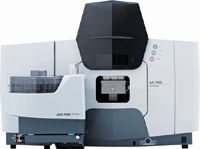
FT-IR sampling system
FT-IR sampling systems from Thermo Fisher Scientific are designed to characterize the chemical composition of biological systems, such as lipids in algae. According to the company, the sampling systems combine instrumentation, accessories, and software in four different configurations: ATR spectroscopy, transmission spectroscopy, reflectance spectroscopy, and infrared microscopy. Thermo Fisher Scientific, Inc., Madison, WI;
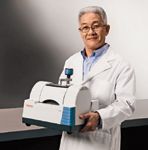
NIR spectrometers
Avantes' AvaSpec NIRLine dispersive, near-infrared spectrometers are designed to measure long wavelengths. The instruments reportedly come with toroidal focusing mirrors and dynamic dark correction. According to the company, the instruments can perform a variety of applications, including moisture content measurement, qualitative and quantitative measurement of volatile organics, plastic characterization, material identification, and irradiance measurements. Avantes, Eerbank, The Netherlands;
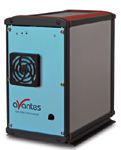
Laser module
B&W Tek's CleanLaze laser module is designed for Raman spectroscopy. The module has a linewidth of 0.03 nm and TEM00 beam at 785 nm. The module reportedly is available in free space, single, or multimode fiber-couple versions. According to the company, the module provides power stability, low wavelength drift, and modulation up to 100 kHz. The module is available in turnkey and OEM configurations. B&W Tek, Inc., Newark, DE;
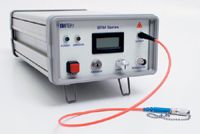
Calibration standards
HellmaUSA, a calibration laboratory that produces and certifies liquid and gas calibration filters for testing spectrophotometers, was accredited according to DIN EN ISO 17025. According to the company, the DIN EN ISO 17025 ensures the traceability of calibrations to references of the National Institute of Standards and Technology, which gives laboratories greater transparency and improved protection over measurement results. HellmaUSA, Plainview, NY;
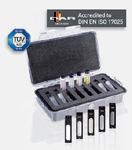
Mercury analyzers
The Hydra IIAF mercury analyzer from Teledyne Leeman Labs is designed for fluorescence detection with a detection limit of 0.1 ppt or less for laboratories that employ EPA Method 245.7 or European Standard EN 3506. The Hydra IIAF Gold analyzer is designed for the requirements of EPA Method 1631 and European Standard 12338, reportedly utilizing a short sample cycle and a 270-position autosampler. According to the company, both analyzers can transition from cold vapor atomic fluorescence to cold vapor atomic absorption to satisfy compliance with the Safe Drinking Water Act. Teledyne Leeman Labs, Hudson, NH;
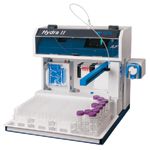
Infrared wire grid polarizers
Infrared wire grid polarizers from Optometrics Corporation are designed for high and low power and FT-IR applications. According to the company, ruled polarizers result in closely spaced, highly conductive wires with high extinction ratios and high damage thresholds, while holographic wire grid polarizers can be used with a wide variety of materials that are not applicable to the ruling process. The polarizers reportedly can be used at AOIs up to 45° with collimated, diverging, or converging beams. Optometrics Corporation, Ayer, MA;

Spectrometer
StellarNet's Black-Comet-HR concave grating spectrometer is designed for high-resolution applications. According to the company, the system is available for measurements in two ranges, UV (200–600 nm) and visible (380–750 nm), and can achieve resolving resolutions of 0.4 nm. The system reportedly is USB-2 powered, shock-proof, and vibration tolerant with no moving parts. StellarNet, Tampa, FL;

Nanocarbon analysis systems
Thermo Fisher Scientific's two nanocarbon analysis systems incorporate the company's DXR Raman system and are designed to provide information about the molecular structure and morphology of carbon nanomaterials. According to the company, the systems, which comprise software and hardware, include rigorous automated calibration and alignment routines, control of laser power, and quality checks. Thermo Fisher Scientific, Inc., Madison, WI;
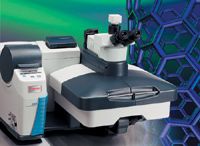
Handheld XRF analyzer
The DELTA-50 XRF analyzer from Olympus Innov-X is designed for excitement and analysis of toxic metals in plastics, electronics, soils, and metals, and rare earth elements in outcrop, ore, and drill samples. The portable analyzer reportedly comes with a 4 W, 50-kV X-ray tube and a high-resolution, large-area silicon drift detector. According to the company, the instrument can be used to analyze consumer goods for regulated element screening, soils for toxic element evaluation, and ores and exploration samples for metal content grading. Olympus Innov-X, Woburn, MA;
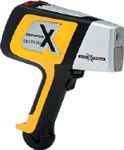
Portable spectrophotometer
The iSpec portable spectrophotometer from B&W Tek comes with silicon and InGaAs array detectors that allow it to measure from 350 nm to 2600 nm. According to the company, the system is equipped with high-throughput spectrographs, a plug-and-play USB interface, broadband and high speed measurement systems, built-in high intensity light sources with forced air cooling, and fiber-optic input–output connections. The system reportedly can be used in agricultural, pharmaceutical, geological–gemological, and semiconductor applications. B&W Tek, Inc., Newark, DE;
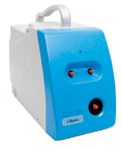
X-ray source
Moxtek's 50-kV monoblock X-ray source is designed for applications including handheld, portable, and benchtop instrumentation. According to the company, the source is a battery-operated, low-power device that uses passive air cooling and delivers a high intensity flux of approximately 2 × 1011 photons/s/steradian/0.10 µA. The source reportedly weighs ~350 g and provides a variable energy output up to 50 kV, a maximum beam current of 0.20 mA, and a total power of up to 4 W. Moxtek, Orem, UT;
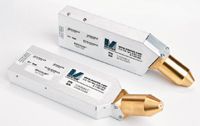
ICP-MS system
The aurora M90 ICP-MS system from Bruker reportedly combines the company's CRI II collision reaction interface for interference elimination with the Nitrox 500 accessory to achieve lower limits of detection on elements such as As and Se. The system has an ion mirror and curved-fringe rods designed to provide high sensitivity (1 million counts per s for 1 µg/L), low background noise, and low detection limits. According to the company, the system can be used for environmental, food, and clinical applications. Bruker, Billerica, MA;
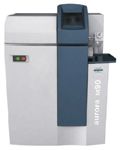
FT-NIR software
Horizon MB software from ABB Analytical Measurement is designed to assemble the tools for developing and deploying FT-NIR quality assurance (QA) methods. According to the company, the software deploys smart wizards that guide users in every topic, including chemometric models, library searching, QA method deployment, and regulated environments. ABB Analytical Measurement, Quebec, Canada;
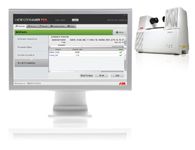
Topographic Raman imaging
WITec's True Surface Microscopy imaging mode is designed to allow large-area topographic coordinates from the profilometer measurement to be precisely correlated with the large-area confocal Raman imaging data. This option reportedly enables samples that would normally require extensive preparation to obtain a certain surface flatness to be automatically characterized as they are. According to the company, it allows scan ranges as large as 50 mm × 100 mm with a spatial resolution of 100 nm vertically and 10 µm laterally. WITec GmbH, Ulm, Germany;
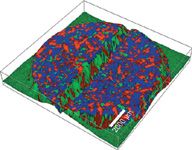
Certified reference materials catalog
SPEX CertiPrep's 2011–2012 catalog of certified reference materials includes more than 4000 organic and inorganic reference materials and standards. The catalog lists reference materials for inorganic analysis by ICP, ICP-MS, IC, AA, XRF, and ion-selective electrode and organic analysis by GC, GC–MS, HPLC, and LC–MS. The catalog also includes consumer safety products designed for the analysis of phthalates in polyethylene, heavy metals in plastic, and RoHS/WEEE compliance samples. More than 100 PCB congeners are also listed. SPEX CertiPrep, Metuchen, NJ;
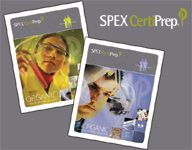
Silicon drift detector
The Super SDD silicon drift detector from Amptek is designed for high-count rate applications in hand-held systems and bench-top analyzers. The X-ray detector, preamplifier, and cooler system reportedly are thermoelectrically cooled. The input FET and a feedback circuit are mounted on the detector's two-stage cooler and are kept at approximately -55 °C. According to the company, the 25 mm2 × 500 µm detector provides an FWHM resolution of 127 eV, a peaking time of 11.2 µs, and a peak-to-background ratio of 8000. Amptek, Inc., Bedford, MA;
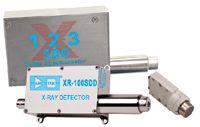
IR spectrometer
PerkinElmer's Spectrum Two compact IR spectrometer is designed to perform IR analysis on materials across a wide range of applications. The spectrometer reportedly is transportable and has optional wireless connectivity capabilities. According to the company, the instrument can be used to examine the quality of pharmaceuticals, polymer materials, hydrocarbon levels, lubricants, fuel analysis, and nutraceuticals. PerkinElmer, Waltham, MA;
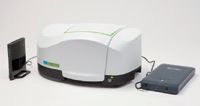
UV–vis–NIR miniature spectrometer
The VS7000 UV–vis–NIR miniature spectrometer from HORIBA Jobin Yvon is a preconfigured, low stray light system that includes an uncooled back-illuminated CCD and USB-2 integrated electronics. The spectrometer is designed for OEM low light, high SNR requirement applications. The instrument also includes a selection of slit widths, integrated OSF, and three spectral range selections: 200–860, 380–750, and 200–1050 nm. HORIBA Jobin Yvon, Inc., Edison, NJ;
www.horiba.com/scientific/VS7000
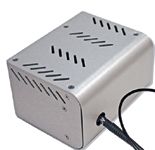
Portable Raman analyzer
The EZRaman-I-9 portable Raman analyzer from Enwave Optronics is designed to minimize fluorescence for the analysis of difficult-to-measure samples. According to the company, the analyzer provides longer excitation wavelength above 900 nm. Enwave Optronics, Inc., Irvine, CA;
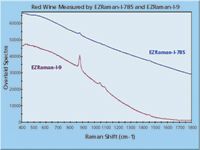
Mercury analyzer
The Model RA-3000F Gold+ mercury analyzer from Nippon Instruments Corporation is designed for EPA Methods 1631E and 245.7. According to the company, the instrument simplifies low to sub-ppt mercury analysis and reduces reagent consumption and wastes by as much as 80%. Nippon Instruments North America, College Station, TX;
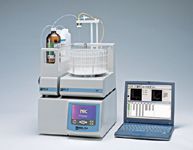
Temperature-control accessories
The Falcon accessories from Pike Technologies are designed to provide temperature control for quantitative analysis of liquid samples. According to the company, the NIR-UV–vis version can accommodate glass vials with diameters of 5–12 mm or 1–20 mm cuvettes, and the FT-IR version can accommodate a wide selection of demountable liquid cells and spacers. Both designs feature Peltier cooling and heating, and reportedly have ranges of 5–100 °C with accuracy of ±0.5%. Pike Technologies Inc., Madison, WI;
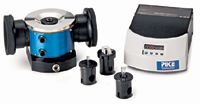
Cuvette holder
Quantum Northwest's t2 Peltier cuvette holder is designed as a temperature-controlled holder for nearly any UV–vis absorbance spectrophotometer. According to the company, the compact holder can be mounted in different instruments and permits rapid changes over a wide temperature range. The holder reportedly can be used for assays, DNA melting, and other applications in which absorbance is dependent on the temperature of the sample. Quantum Northwest, Liberty Lake, WA;
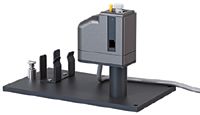
FT-IR spectrometer
Thermo Fisher Scientific's Nicolet iS5 FT-IR spectrometer is designed with the company's OMNIC software for product assurance testing, basic troubleshooting, and chemistry teaching. According to the company, the instrument has an open-architecture sample compartment that allows for a wide variety of sampling accessories, new iD sampling accessories, and software solutions for raw materials, impurities, and mixtures identification. Thermo Fisher Scientific, Inc., Madison, WI;

UV–vis–NIR microscope spectrophotometer
The model 308 PV UV–vis–NIR spectrophotometer is designed to be added to an open photoport of a microscope or probe station for nondestructive spectral analysis of samples such as minerals, flat-panel displays, and semiconductor thin films. The spectrophotometer reportedly can acquire spectra of microscopic sample areas by absorbance, reflectance, luminescence, and fluorescence. According to the company, it can also be used with properly configured microscopes to obtain high-resolution color images. CRAIC Technologies, San Dimas, CA;

ICP-MS system
The NexION 300 ICP-MS system from PerkinElmer is designed for parts-per-trillion detection of trace elements. According to the company, the system reduces the need for daily user maintenance and cleaning. The instrument reportedly provides three modes of interference removal: standard, collision, and reaction. The modes are designed for routine analyses, semiquantitative analyses, and analyses of difficult elements and matrices,
respectively. PerkinElmer, Inc., Waltham, MA;
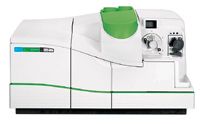
Photovoltaic measurement system
Newport Corporation's Oriel IQE-200 photovoltaic cell measurement system is designed for simultaneous measurement of the external and internal quantum efficiency of solar cells, detectors, and other photon-to-charge converting devices. The system reportedly splits the beam to allow for concurrent measurements. The system includes a light source, a monochromator, and related electronics and software. According to the company, the system can be used for the measurement of silicon-based cells, amorphous and mono/poly crystalline, thin-film cells, copper indium gallium diselenide, and cadmium telluride. Newport Corporation, Irvine, CA;

Raman microscope
Renishaw's inVia Raman microscope can be used for nondestructive testing of sperm DNA for assessing the healthiness of sperm cells. The instrument can be customized to integrate optical tweezing, which enables researchers to immobilize sperm cells with a tightly focused laser beam. The resulting Raman spectra contain information about the vibrations of molecules within the sperm cells and can be used to assess the state of its DNA. Renishaw, Hoffman Estates, IL;

DNA quality control standard
Starna's DNA quality control standard is provided in a 1.5-mL liquid vial that offers the DNACON 260/280 reference material in format suitable for use in drop technology systems. The vial reportedly is produced in an ISO 17025 and ISO Guide 34 accredited environment and provides a NIST-traceable quality control standard. According to the company, the concentration is matched for use with ultralow volume and short-pathlength measurement systems. Applications include DNA purity evaluations in clinical and bioscience laboratories. Starna Cells Inc., Atascadero, CA;
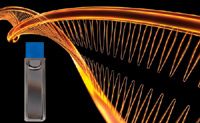
Cooling cartridge
A cooling cartridge from Harrick Scientific Products is designed for use with the company's high-temperature reaction chambers. The cartridges reportedly work with the company's diffuse reflection unit and most Raman microscopes. According to the company, the cartridge can be put in place of an existing heater and connected to a recirculating cooler–heater, allowing reaction chambers to operate with moderate cooling or heating. Harrick Scientific Products, Inc., Pleasantville, NY;
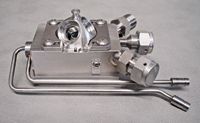
MS system
The LCMS-8030 triple-quadrupole MS system is designed to be coupled with an UHPLC system for detection of peaks having widths of 1 s. The system reportedly provides a polarity switching time of 15 ms. According to the company, the system's desolvation line can be maintained without breaking vacuum. The system can be combined with the company's Nexera UHPLC system for automated optimization of analytical conditions for quantitative target compounds and unattended overnight operation. Shimadzu Scientific Instruments, Inc., Columbia, MD;
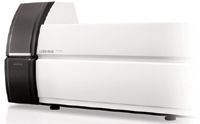
Raman system
The LabRam HR Raman system from Horiba Scientific is available with an ultra-low-frequency (ULF) that enables measurements of Raman spectra with shifts as low as 5 cm-1 relative to the exciting laser line. According to the company, the system can be used to determine chain lengths in polymers and differentiate similar crystal forms (polymorphs) in pharmaceutical products, among other applications. Horiba Scientific, Edison, NJ;
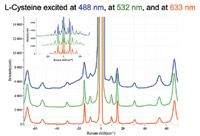

Best of the Week: AI and IoT for Pollution Monitoring, High Speed Laser MS
April 25th 2025Top articles published this week include a preview of our upcoming content series for National Space Day, a news story about air quality monitoring, and an announcement from Metrohm about their new Midwest office.
LIBS Illuminates the Hidden Health Risks of Indoor Welding and Soldering
April 23rd 2025A new dual-spectroscopy approach reveals real-time pollution threats in indoor workspaces. Chinese researchers have pioneered the use of laser-induced breakdown spectroscopy (LIBS) and aerosol mass spectrometry to uncover and monitor harmful heavy metal and dust emissions from soldering and welding in real-time. These complementary tools offer a fast, accurate means to evaluate air quality threats in industrial and indoor environments—where people spend most of their time.